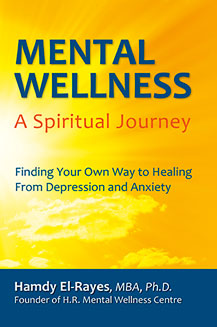Risk of Suicide
Suicidal thoughts can affect anyone regardless of age, gender, or background. Suicide is the third leading cause of death among young people and is often the result of mental health conditions that effect people when they are most vulnerable. Suicidal thoughts and suicide occur too frequently but should not be considered common because they may be indication of more serious underlying issues.
Suicide is the tenth leading cause of death among adults and the third leading cause of death among adolescents. Each year in Canada, more than 3,400 individuals commit suicide, leaving behind thousands of friends and family members who struggle with the pain of loss and the impact of the tragedy on their lives.
A suicidal person becomes so desperate and in so much pain that they see death as the only way out. However, in hindsight, survivors of suicidal attempts have indicated how wrong they were. They appreciate that survived and found their way to a better life.
Suicidal thoughts or behaviors are considered a psychiatric emergency because both they are damaging and dangerous. If you experience these thoughts, you should seek immediate assistance from a health or mental health care professional.
Warning Signs
• Suicidal ideation – It begins with seemingly harmless thoughts like “I wish I wasn’t here” but can become more overt and dangerous. They threat or comment about killing themselves
• Increased alcohol and drug use
• Aggressive behavior
• Social withdrawal from friends, family and the community
• Dramatic mood swings
• Talking, writing or thinking about death
• Impulsive or reckless behavior
A person exhibiting the following behaviors is at imminent danger and should get professional healthcare immediately to assess the risk and take preventive measures:
• Putting their affairs in order and giving away their possessions
• Saying goodbye to friends and family
• Mood shifts from despair to calm
• Planning, possibly by looking around to buy, steal or borrow the tools they need to commit suicide, such as a firearm or prescription medication
Risk Factors for Suicide
Research shows that about 90% of individuals who die by suicide experience mental illness. The following factors may put a person at risk of suicide, including:
• A family history of suicide
• Substance abuse – Drugs and alcohol can result in mental highs and lows that exacerbate suicidal thoughts
• Intoxication – More than one in three people who die from suicide are found to be currently under the influence
• Access to firearms
• A serious or chronic medical illness
• Gender – Although more women than men attempt suicide, men are four times more likely to die by suicide
• A history of trauma or abuse
• Prolonged stress
• Isolation
• Age – People under age 24 or above age 65 are at a higher risk for suicide
• A recent tragedy or loss
• Agitation and sleep deprivation
How to Prevent Thoughts of Suicide
The Mental Wellness Program can help you understand your feelings and improve mental wellness and resiliency. The program is a holistic approach that addresses body, mind, and spirit. It incorporates principles of cognitive behavioral therapy and dialectical behavior therapy. It can help you change your perception of yourself and your worldview, understand your thoughts of suicide, recognize unhealthy patterns of thinking and behavior, validate your feelings, and learn new skills to handle life difficulties.
Medication may be used if necessary to alleviate symptoms, treat underlying depression and anxiety, and lower your risk of hurting yourself.







